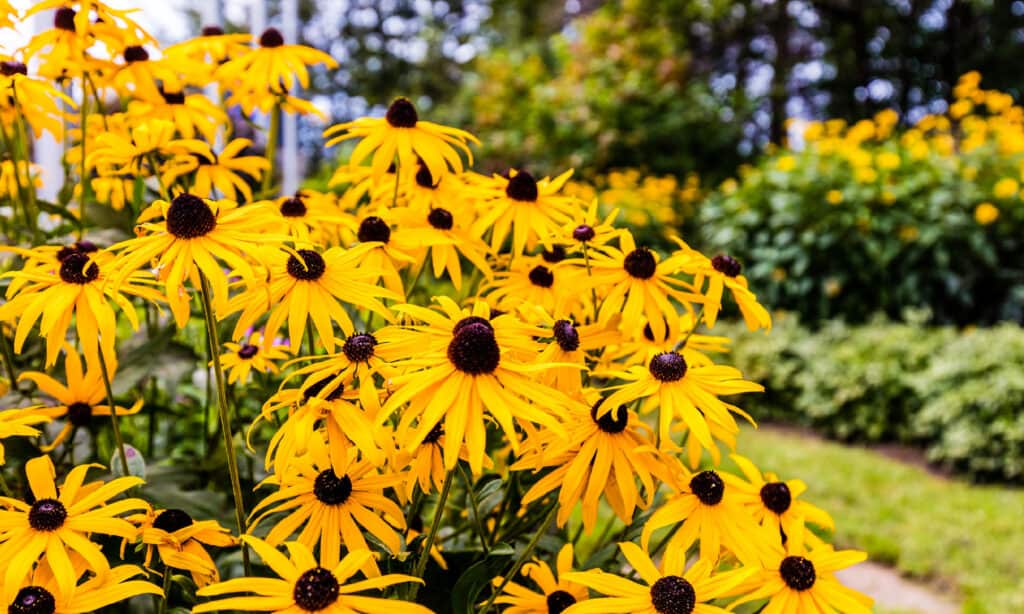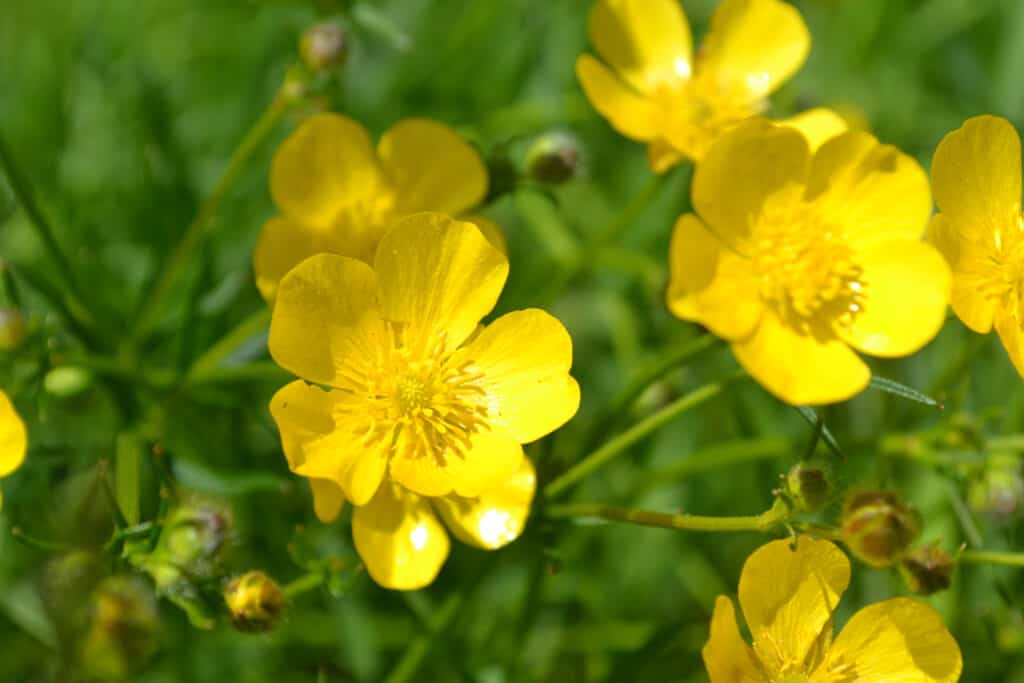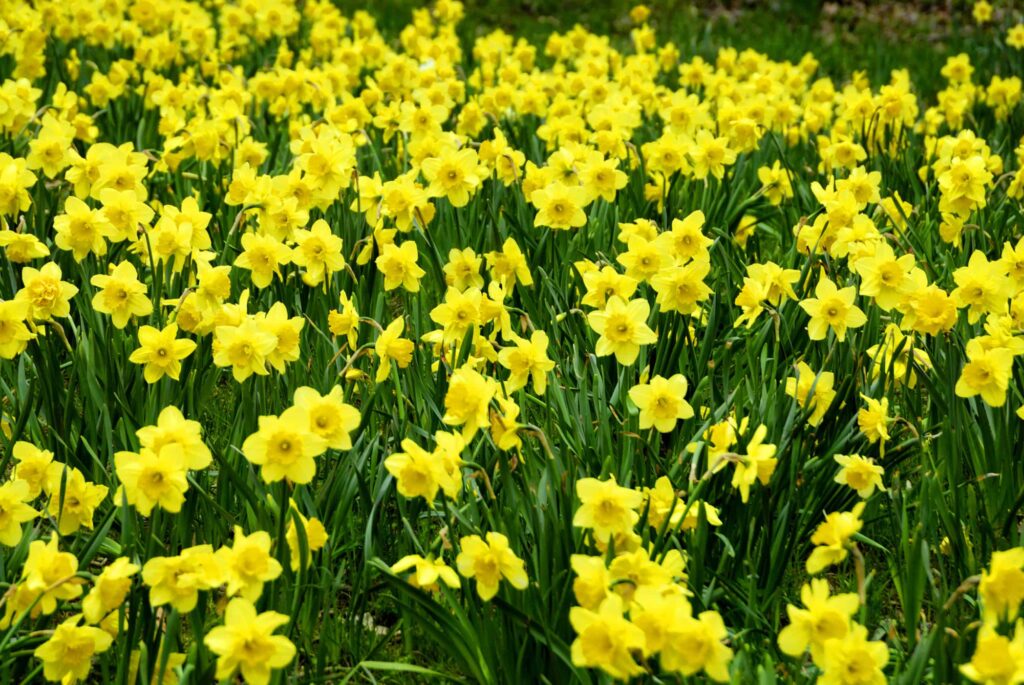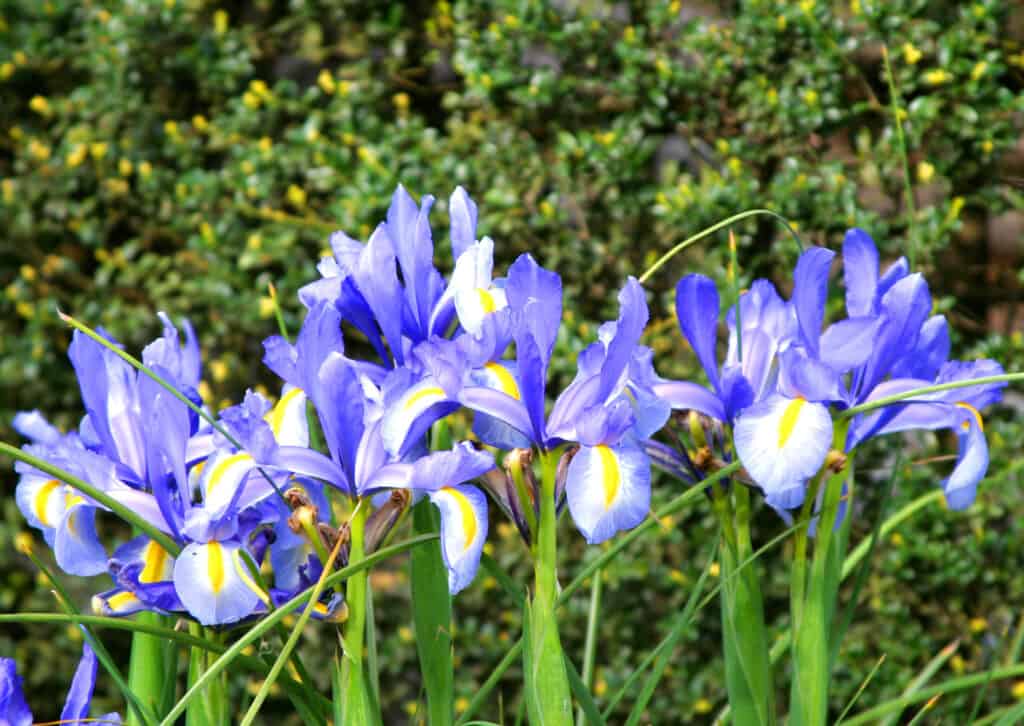Bone-chilling cold-spells? Sounds like a zone 3 winter. However, harsh winters won’t stop ambitious gardeners from painting their yards with colorful plants. Despite the challenges, many gardeners in colder climates find that a little creativity and preparation can go a long way. With the right plan, you can keep gardens looking beautiful, blossoming, and lively. It all starts with knowing what to plant. So, what are the best perennial flowers for zone 3? Read on to find out.
1. Black-Eyed Susan

With their bright color, black-eyed susans are popular with gardeners
©iStock.com/Dopeyden
Black-eyed susans (Rudbeckia hirta) are popular perennial flowers for zone 3. They’re popular for their bright yellow flowers and their ability to attract bees and other pollinators. However, these plants can also fall victim to pests, including aphids, beetles, and mites.
Aphids are small, soft-bodied insects that feed on the sap of plants. They take in more nitrogen than other leaf-eating insects. As a result, aphids can cause leaves to turn yellow and twist, and they can also transmit diseases. Beetles, on the other hand, tend to attack the flowers and buds of black-eyed susans. If left unchecked, they can quickly destroy a flower garden.
Mites are tiny spider-like creatures that feed on the leaves of plants. They can cause the leaves to turn brown and drop off, and they can also spread diseases. Certain types of fungi can also attack the plant’s roots. Luckily, there are several ways to control these pests, including using beneficial insects, applying insecticidal soap, and keeping the garden clean.
Here are a few extra fun facts about this flower; black-eyed susan is a symbol of encouragement in the language of flowers. They would make an excellent present to give to a close friend who is having a difficult time. These perennial flowers for zone 3 are pioneer plants. That means they are one of the first plants to grow after a fire or other natural disaster.
2. Buttercups

Buttercups are stunning perennials that can cope with zone 3
©Juli_Kom/Shutterstock.com
Buttercup perennials are a beautiful addition to any garden, but they can be finicky plants. If you live in zone 3, there are a few things you need to know to keep your buttercups happy and healthy all season long. First of all, make sure to plant them in an area that gets full sun. Buttercups need at least six hours of sunlight each day in order to bloom properly.
Secondly, be sure to give them plenty of room to spread out. These plants can spread up to two feet each year, so you’ll need to leave some space for them to grow. Lastly, make sure to water them regularly during the growing season. Buttercups are relatively drought-tolerant, but they will still need regular watering in order to thrive.
Buttercup flowers are a favorite of bees and other pollinators. The flowers are rich in nectar, and their bright colors attract bees from far and wide. Buttercups are also a popular choice for butterflies, and their petals provide a landing pad for these delicate creatures.
In addition to pollinators, buttercup flowers also attract other small animals, such as finches and rodents. The seeds of the buttercup are a tasty treat for these creatures, and the flowers themselves provide shelter from the elements. As a result, buttercups play an important role in the ecosystem, providing food and shelter for a wide variety of animals.
3. Daffodils

Daffodils are typically a sign that warmer weather is around the corner!
©Arvind Balaraman/Shutterstock.com
For those in zone 3, spring can feel like a long time coming. But when those first daffodils bloom, we know warmer days are on the way. If you hope to add a reminder of warmer times to your yard this spring, consider planting daffodils. Daffodils are one of the first flowers to bloom in spring, often peeking out of the ground while there is still snow on the ground. These cheerful flowers are relatively easy to care for, and they will come back year after year.
First, pick a sunny spot in your yard that has well-drained soil. Then amend the soil with some compost or manure to help improve drainage. Grab your spade and dig a hole twice as wide as the bulb. Gently plant the bulb with the pointed end up; after planting, water them well. Continue to water them generously throughout the growing season. The actual blooming period can vary depending on the variety of daffodils, but most will bloom sometime between March and May.
4. Iris

Irises come in a stunning array of colors which can brighten up any garden
©iStock.com/LailaRberg
Planting irises is a great way to make a garden pop with color. These beautiful flowers come in a wide range of colors, and they are relatively easy to care for. But irises are not just pretty flowers; they are also tough plants that can thrive in various conditions. If you live in zone 3, there are a few things you need to know in order to grow healthy irises.
First of all, make sure to plant your irises in an area that gets full sun. Irises have a long blooming season, so you can enjoy their beauty for months at a time. Plant irises that are specifically bred for cold weather tolerance. Otherwise, your plants will likely succumb to the harsh winter weather.
Siberian irises tolerate a wide range of soils and prefer full sun to partial shade. Once established, they are quite drought-tolerant and require very little maintenance. Just make sure there’s enough drainage to avoid root rot.
Luckily, there are wide varieties of the iris that are well-suited for zone 3 gardens. For instance, Siberian irises are among the most trouble-free and low-maintenance flowers you can grow. They are tall and proud, with long, elegant leaves and beautiful blooms in shades of blue, violet, pink, and white.
Up Next
The photo featured at the top of this post is © Arvind Balaraman/Shutterstock.com
Sources
- How Stuff Works, Available here: https://home.howstuffworks.com/perennial-gardens.htm
- Buffalo-Niagara Gardening, Available here: https://buffalo-niagaragardening.com/2021/06/29/revamp-your-perennial-gardens-height-color-more/
- Extension, Available here: https://extension.uga.edu/publications/detail.html?number=B1424&title=landscape-basics-success-with-herbaceous-perennials
Thank you for reading! Have some feedback for us? Contact the AZ Animals editorial team.






